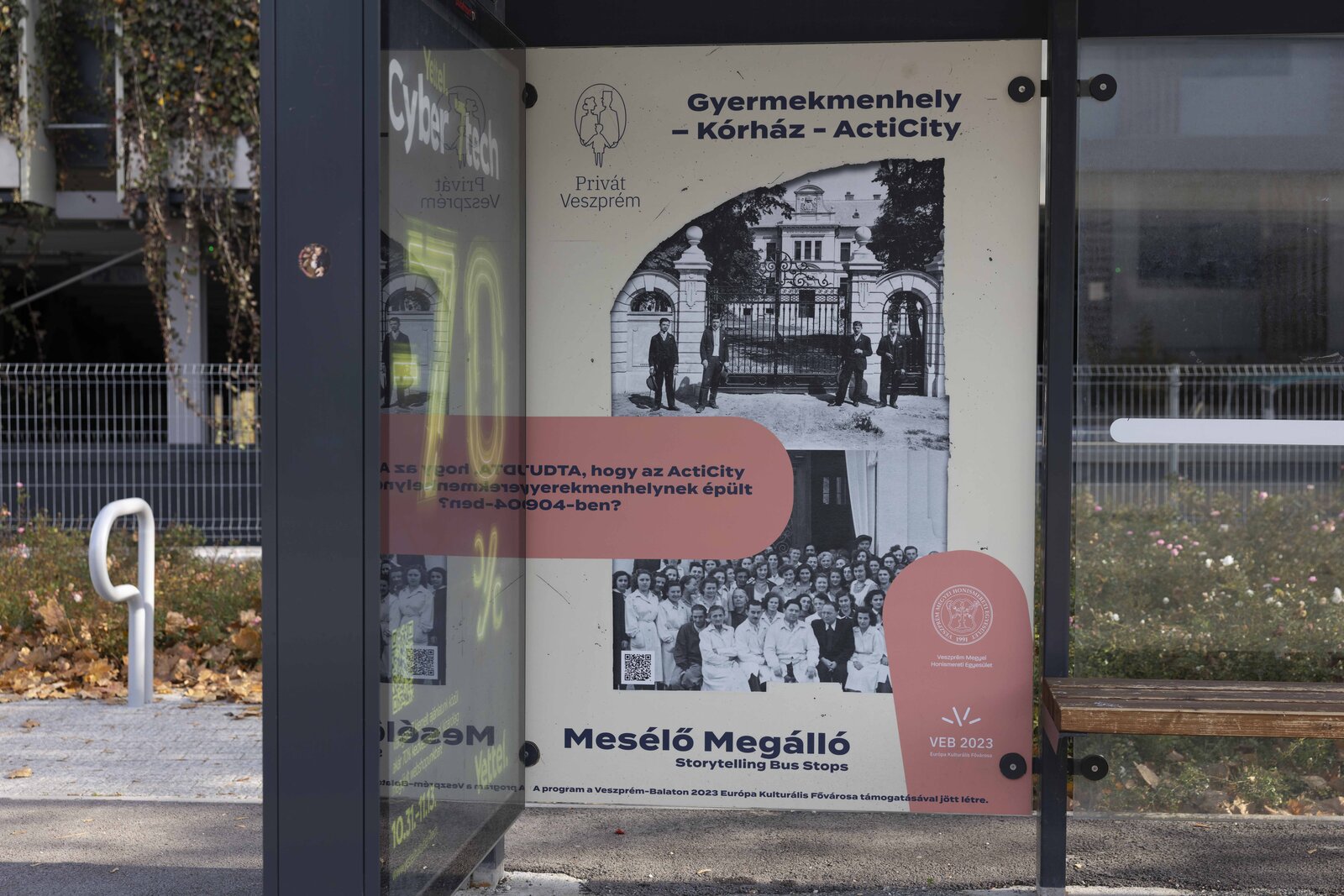Storytelling bus stops - Children's Hospital


Elegant young men posed in suits with canes and hats in hand in front of the decorative gate of the Veszprém children's home, which was preparing for its opening in the autumn of 1904. Among them the eldest, the mustachioed Miklós Csomay, a master builder who, at the age of thirty, directed construction projects such as Veszprém County Hall, the theatre, the cinema and the children's home built according to the plans of Lajos Ybl. The building is perfect in every detail. Proportional shapes, generous dimensions, high-quality building materials, decorative cladding, stained glass windows, wrought iron water spouts and drains and stucco decorations proudly proclaim that noble things were created here for a good cause. For nearly fifty years, thousands of abandoned orphaned children found a home here as they entered through the ornate wrought iron gate, or were placed with foster parents in rural locations.
The state institutional network for child protection in Hungary was established over several years based on the Act VIII of 1901. Between 1901 and 1904, 18 children's homes were built for abandoned children using the state budget. In Transdanubia, the first such institutions were established in Szombathely and Pécs, followed by Veszprém in 1903–1904 as part of the programme to serve Central Transdanubia.
During the chaotic period of World War II, at the end of 1944, director-chief physician Sámuel Szenttornyay arranged for healthy children to be transported west, while leaving the sick and disabled behind. The institution also took in children and caregivers who had fled from Kosice and Rimavská Sobota under state care, and all of them weathered the most difficult times of the city’s liberation in the underground rock shelter in Jókai Mór Street.
After 1945, orphanages were gradually reorganised into state children's homes. The status of the Veszprém institution also changed gradually. From June 1945, the children's home's therapeutic function increased, as a ten-bed pediatric ward was transferred there from the hospital. It did not retain its new name, State Child Protection Institute, for long, as the Ministry of Welfare declared it a children's hospital in 1950. On 3rd September 1955, it was renamed after Pál Heim, the founder of Hungarian infant and pediatric medicine.
On 15th May 1995, the building had to be vacated, and the institution moved to Building E of Csolnoky Ferenc County Hospital Veszprém. In 2008, the Veszprém County Municipality transferred the former hospital building for ninety years to the University of Pannonia for the establishment of a scientific centre, but this opportunity was not utilised. The building stood abandoned for years. Thanks to the investments of the European Capital of Culture, from spring 2023, children can once again use the renovated building.

